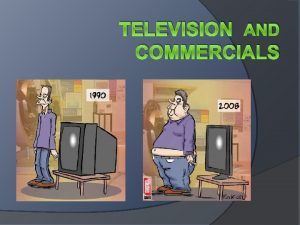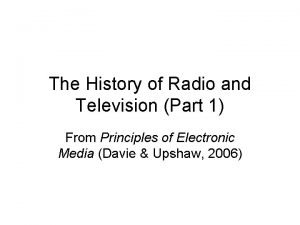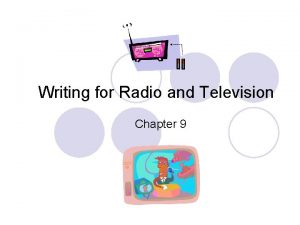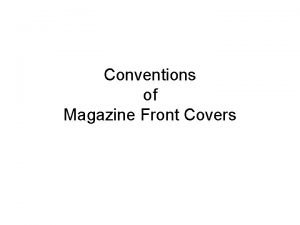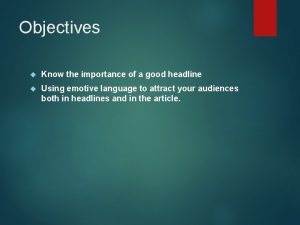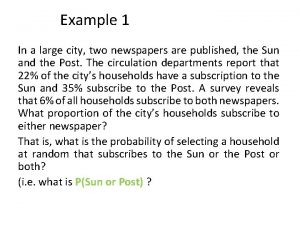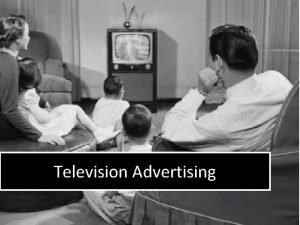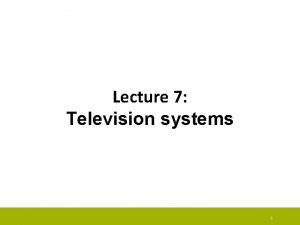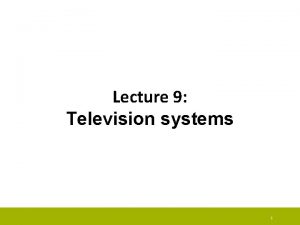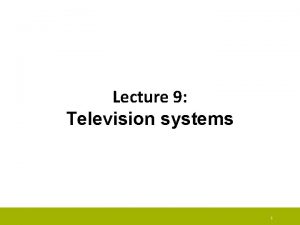Advertising We are exposed to television newspapers radio













- Slides: 13


Advertising We are exposed to television, newspapers, radio, the Internet, social media and many different forms of media every day. We are constantly surrounded by media. Therefore, we may not even realise that we are seeing and hearing hundreds of advertising messages every day! Can you think of any advertisements you saw recently? Where did you see them? What was being advertised?

Advertising Many of the products we buy and use every day are made by companies. Our clothes, food, technology, books, games and toys are often made by large companies. These companies want us to buy and use their products. However, they need to spread the word about their product. These companies pay for media to communicate their message and promote their product. The main aim of the media is to persuade us to buy or use a product. This is called advertising.

What Is the Point of Advertising? Advertising is always trying to do one of four things: Tell us something we need to know; Persuade us to buy a product; Persuade us to change our behaviour; Present a point of view.

Purpose of Advertising The purpose of an advert is to sell to people. Adverts are often aimed at a particular type of consumer. Companies may create media advertising aimed at adults, children, younger people, older people or families. Advertising sends a positive message about the product or service. Adverts are made to appeal to the consumer’s personality.

Influence and Impact of Advertisements Emotions play a big part in advertising. Advertising is created to get an emotional reaction. Advertisements are carefully created to make us have certain feelings; happy, excited, safe, interested, or enthusiastic. We associate these emotion with the product or brand being advertised. In this way, we feel that having a certain product or brand will make us happier, safer or even look better. Everything in the advertisements we see around us is carefully chosen to make a product or brand look exciting and attractive and appeal to the audience. Adverts sometimes use catchy music or jingles so that we remember the product.

Who Decides what Message to Send? We are exposed to media every day. We receive information from many different sources like text messages, email, signs, newspapers, television, and apps on smartphones. The people who make media are the ones who decide what message they want to communicate. They make decisions on what information, views and opinions they want to share. The information we receive is what they want to say. As a result, much media is often biased.

Advertising Techniques People who make advertising use lots of techniques to influence our emotions and try to persuade us to use or buy a product. These include: • Using colours that attract our attention, like red or yellow; • Displaying logos and brand names; • Associating popular characters or animals with their product; • Catchy jingles and slogans; • Including celebrities in advertisements; • Special offers, like buy one get one free, 50% extra free, or money off. A slogan is a catchy phrase used to encourage people to buy or use your product.

Hidden Advertising • There is lots of media all around us. There’s lots of advertising all around us too. But not all paid for advertising is obvious. • Sometimes products are advertised in movies, in television shows or at sporting events. This is called hidden advertising. • Companies can also pay to have their products featured in the movie or on television. This is called product placement.

Celebrity Ambassador Companies sometimes pay a famous person to use or endorse a particular product. Companies know that seeing a celebrity drinking a particular drink, or wearing a particular brand of clothing can make that drink or brand seem more popular. This can make people want to use or buy the product. This is what is called a celebrity ambassador. The celebrities get paid a lot of money to be a celebrity ambassador. Nowadays, companies also pay people who make videos or stream themselves playing video games to use their products.

Advertising Guidelines There are some general guidelines that advertising must follow. Those who make media must make sure their adverts follow these guidelines: Adverts should treat everyone equally. Adverts should not exaggerate, mislead or deceive. Adverts should not upset a child or cause them to have negative feelings. Adverts should always be clear and truthful. Adverts should not promote an unhealthy diet or lifestyle.

‘Fake News’ The media can give us information, but it can also give us misinformation. Misinformation is false information, especially information which is deliberately intended to deceive. Fake News is a form of misinformation. It could be completely made-up or it could be altering the facts of a news story to make it more sensational or controversial. Fake News is usually created to grab people’s attention, or to create propaganda to make a person or one side of an argument look better. Propaganda is information given to promote one side of an argument. This is used quite often in politics.

 Insidan region jh
Insidan region jh History of television advertising
History of television advertising History of radio and television
History of radio and television Writing for radio and television
Writing for radio and television Telephone television radio and the internet
Telephone television radio and the internet Bangladesh jugantor
Bangladesh jugantor Masthead traduzione
Masthead traduzione Strapline magazine
Strapline magazine Emotive newspaper headlines
Emotive newspaper headlines Hammer headline in newspaper
Hammer headline in newspaper Examples of probability in newspapers
Examples of probability in newspapers Minnesota historical newspapers
Minnesota historical newspapers Bengali newspapers online
Bengali newspapers online Kien thuc ngay nay is one of the most popular
Kien thuc ngay nay is one of the most popular

